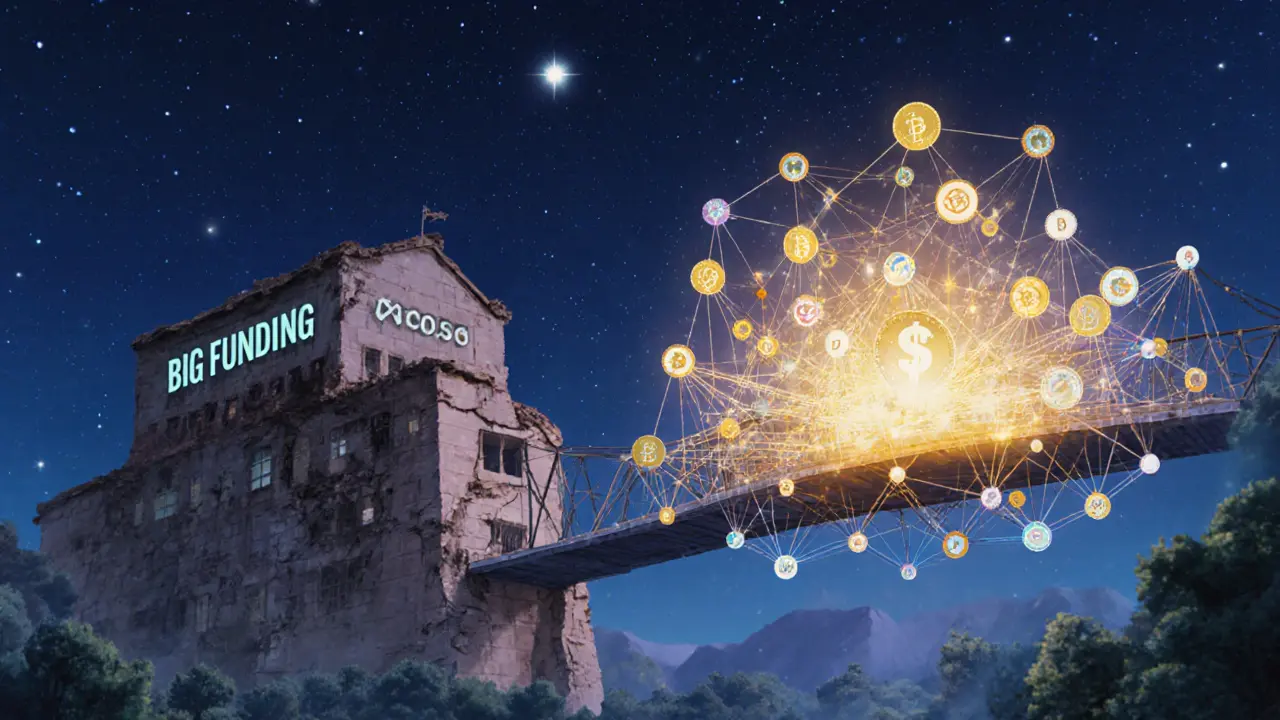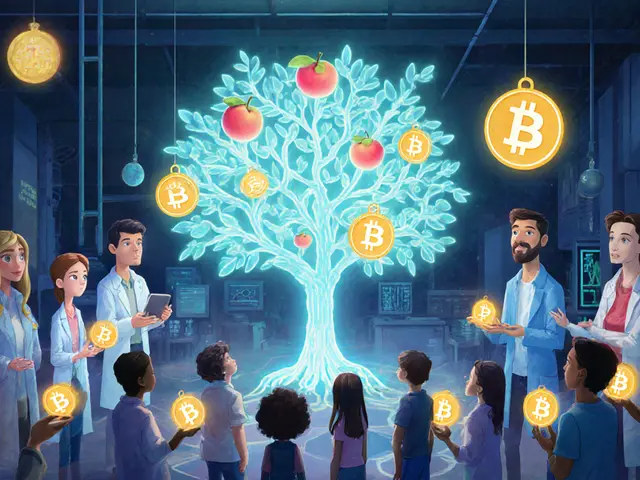NEOS Token Reward Calculator
This calculator shows realistic token economics for NEOS based on:
- Current price: $0.0002592
- 24h trading volume: $291.04
- Reward structure: 50% to researchers, 25% to validators, 25% to stakers
Neos.ai (NEOS) isn’t another meme coin or speculative token chasing hype. It’s an attempt to rebuild how science gets done - using blockchain, AI, and a new kind of incentive system. But here’s the catch: while the idea sounds powerful, the real-world use of NEOS right now is extremely limited. If you’re wondering whether this is the next big crypto breakthrough or just another experiment stuck in a lab, the answer lies in understanding what Neos.ai actually does - and what it doesn’t.
What Neos.ai Actually Is
Neos.ai is a decentralized platform built to solve a real problem: scientific research is slow, expensive, and controlled by a few big funders. Universities, governments, and corporations decide what gets studied, often ignoring questions that don’t fit their agenda. Neos wants to change that by letting anyone propose a research goal - called a Research Interest Point (RIP) - and then letting the community fund and solve it.
Think of it like a Kickstarter for science. Someone says: "I want to find a new way to treat Alzheimer’s using epigenetics." They post it as a RIP. Others stake NEOS tokens to support it. Then, researchers - human or AI - work on solving it. When someone finds a valid solution, they get paid in NEOS. The people who staked the tokens also earn a share. And the breakthrough? It’s locked into an IP-NFT - a digital certificate that proves who owns the rights to the discovery.
This isn’t theory. The whitepaper lays it out clearly: the platform uses a system called Proof of Research (PoR), which checks that the work done is original, useful, and matches the RIP’s goals. It’s not about mining blocks or staking for interest - it’s about proving you actually did the science.
How NEOS Token Works
The NEOS token is the engine of this system. It’s not just a currency; it’s a voting and reward mechanism. Here’s how it flows:
- Stakers lock up NEOS to back RIPs they believe in.
- Researchers solve RIPs and earn 50% of the rewards tied to that RIP.
- Validators (nodes) check the work and get 25%.
- The remaining 25% goes back to stakers as a reward for funding the project.
That’s a clever design. It aligns incentives: the more you care about a problem, the more you stake. The more you solve it, the more you earn. And because everything is on-chain, it’s transparent. No hidden funding, no biased peer review.
But here’s the reality check: as of November 10, 2025, NEOS is trading at $0.0002592 with a 24-hour trading volume of just $291.04. That’s less than what some people spend on coffee in a week. For comparison, even small DeSci tokens like MindCoin trade over $1 million daily. NEOS isn’t liquid. It’s not moving. And that means it’s hard to buy, hard to sell, and nearly impossible to use in practice.
Where You Can Buy NEOS (And Why It’s Hard)
You can’t buy NEOS on Binance, Coinbase, or Kraken. Not even on their main apps. The only way to get it is through the Binance Web3 Wallet and a decentralized exchange (DEX). That means you need:
- A crypto wallet that supports Ethereum or compatible chains (like MetaMask or Binance Wallet).
- Some ETH or BNB to pay for gas fees.
- Knowledge of how to swap tokens on a DEX like PancakeSwap or Uniswap.
If you’re not already deep into Web3, this is a wall. Most people don’t know what a DEX is. Most scientists definitely don’t. So while Neos.ai’s vision is global, its access is hyper-niche. It’s a tool built for crypto natives - not researchers.

Why It Matters (And Why It Might Not)
Neos.ai isn’t trying to beat Bitcoin. It’s trying to fix a broken system. The global research market is worth over $2 trillion. Yet, only a fraction of that goes to high-risk, high-reward projects. Small labs, independent scientists, and AI-driven discoveries often get ignored. Neos gives them a shot.
But so far, there’s no proof it works. No major breakthroughs have been publicly tied to a completed RIP. No universities or labs have announced partnerships. No clinical trials have been funded. Without real results, NEOS is just a token with a cool story.
Compare it to Bittensor, another blockchain project focused on AI. Bittensor has real nodes running AI models, earning tokens for contributing compute power. It has hundreds of thousands of users. Neos.ai? The user base is invisible. The trading volume is microscopic. The community? Barely there.
The Big Risks
There are three major red flags right now:
- Low Liquidity: With under $300 traded in 24 hours, you could easily tank the price by buying a few thousand NEOS. Selling them back could be impossible.
- Regulatory Risk: In July 2024, the SEC said tokens tied to intellectual property and research outcomes might be classified as securities. That means Neos.ai could be forced to shut down or restructure - or face legal action.
- Adoption Gap: Scientists don’t use crypto wallets. They use grant applications. They don’t care about IP-NFTs - they care about publishing in Nature or getting tenure. Until Neos bridges that gap, it’s a beautiful idea with no audience.
Market analysts are already bearish. CoinCodex forecasts NEOS could drop to $0.0001759 by December 3, 2025 - a 24.6% decline. That’s not a bug; it’s a feature of a token with no real demand.

Who Is Neos.ai For?
Neos.ai isn’t for investors looking for quick gains. It’s not for casual crypto users. It’s not even for most researchers.
It’s for three kinds of people:
- DeSci believers - those who think science should be open, decentralized, and community-driven.
- Blockchain developers who want to build on top of a novel PoR protocol.
- Speculators betting on a long-term shift in how research is funded - even if it takes 10 years.
If you’re one of those people, NEOS might be worth watching. But if you’re looking for a solid crypto investment, this isn’t it. Not yet.
The Bottom Line
Neos.ai (NEOS) is one of the most ambitious crypto projects you’ve never heard of - because it hasn’t reached the mainstream yet. It’s trying to solve a real problem with a clever system. But ambition doesn’t pay bills. Liquidity does. Adoption does. Results do.
Right now, NEOS is a prototype. A proof of concept. A dream on a blockchain. It’s not a currency. It’s not a stock. It’s not even a reliable investment.
But if it works - if a team using NEOS actually discovers a new cancer treatment or cracks quantum encryption - then this could be the moment crypto changed science forever.
For now? It’s a quiet experiment. And the world is still waiting to see if it works.

